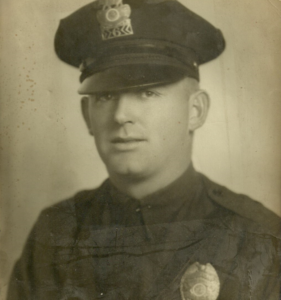 DNA is, from a genealogical viewpoint, the “glue” or “proof” one needs in solving a real family mystery.
DNA is, from a genealogical viewpoint, the “glue” or “proof” one needs in solving a real family mystery.
The photo at left is my maternal Grandpa – Henry Stevenson. He was a foundling – that is, an infant who is found after its unknown parents have abandoned it. He was born in California in 1905 and was, to my knowledge found somewhere in California and turned over to an orphanage. He was, per records to hand, found within a day after his birth.
There are plenty of mysteries surrounding all the circumstances, but my Grandpa, who passed away in 1973, had always wanted to know who his birth parents were. I grew up hearing all his many ideas of who they might be. He was, at one point, the Captain of Police for the City of Inglewood in California in the 1940s. According to him, he went to the orphanage where he had been and discovered that there had been a fire and no records for him existed as they had burnt up.
I did find the original court records, which were stored in the Huntington Library, for his adoption in 1906 and they listed his parents as unknown. Date of birth unknown. No place of birth listed. The couple who adopted him (Henry Harrison and Mary Stevenson) had had him living with them for some months prior to the final adoption. I did find that Mary had been making donations to a local orphanage society and therefore was likely to have gotten Grandpa through that society. This society collected abandoned children and found them homes.
Here is a portion of one page of his adoption proceedings which tells the tale:
Since I could find no clues there, my next step was DNA. I got as many blood relatives that I could to take a DNA test. Some for inclusion and some for exclusion. My mother and her brother had passed away by this time.
The only DNA samples who would share for sure my Grandpa’s DNA were mine and my two brothers. For exclusion purposes, I got my Dad’s DNA. I also got cousins on my mother’s mother’s side – they could be used for exclusion as well. Not a perfect system due to the randomness of how DNA is passed, but what I had to work with.
As Grandpa had had several ideas of who his parents could be, I checked into every one of them first. Physically, they could have been possible, but there was no DNA matches to support any of these stories. I discarded them one by one. Without all the DNA samples I would have just never gone any further.
Then I started making lists of those who shared DNA with my siblings and I but who did not share DNA with my Dad’s side of the family or my Maternal Grandmother’s side of the family. Next was comparing the trees of those who were likely blood relatives of my Grandpa to see where they connected using surnames. From this, I started making test trees.
Fortunately, when using DNA in ancestry, you also get a quantitative amount which you can use to loosely predict the closeness of the match – e.g., 1st cousin, 3rd cousin, distant cousin, etc. This gives you where to look in someone’s tree for a possible match and where to place that possible relative in your test tree. Also having more than my own sample, I had more matches from my brothers as DNA is sometimes shared by one member and not others of the same family. When using DNA to solve a family mystery, the more samples gotten, the better.
I have done these steps many times to help people find their birth parents and other relatives. It helps greatly when you have live people to talk to.
Solving an old mystery where no one is alive to verify anything you find and where the story was likely covered up so many years ago, is a bit trickier. This leaves you with DNA and digging through records to whittle down the possibilities. You are helped greatly if you can find photos and old news articles.
If you are lucky, you will get DNA matches for 3rd cousins and closer. I was lucky in that regard. Not everyone posts a tree, makes their DNA easily accessible or is willing to help. However, when I explained that I was trying to solve the mystery for Grandpa, I got quite a bit of enthusiastic help. After many, many, and I mean many, hours of research, and with the help of a fantastic Historical Society volunteer, I believe I solved the mystery. I have also gained some new cousins, as well — all who are DNA matches and all helped with this. DNA does not lie. Family is family.
The story, as best as I can piece together was this:
William Schneckloth, a resident of Pomeroy, Washington, who was a Farmer, town Sheriff, fairly wealthy and who also owned race horses had recently had a betrayal by his wife of their marriage vows. Oma Tidwell, a young woman who was a servant in his home, likely caring for his two young children, and he had an affair. She got pregnant. To cover up this scandal and to save Oma’s reputation, a young man named Henry Hitchcock, was paid to marry her. As announced in the newspaper in Dec 1904, they went off to California for their wedding trip. My Grandpa was born during this trip and left on a doorstep. This is the article from that time.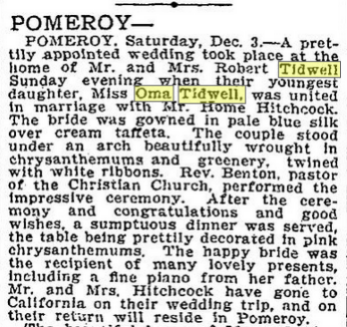
My conclusion was reached after studying my DNA matches as well as the histories of all possible combinations of people involved. Quite a bit of thought went into it. Yes, it is possible that I have it wrong. However, there are many pieces of information that helped me come to this conclusion. So many that it would make this a booklet and not an article.
The above photo is of William Schneckloth on the left and my Grandpa as a boy on the right. The resemblance is remarkable. And here are two other eerie facts — my Grandpa grew up to be a Police Detective and then Captain of Police AND he then later worked at the Hollywood Park Race Track. Definitely not traits passed on by DNA.
Like father, like son?
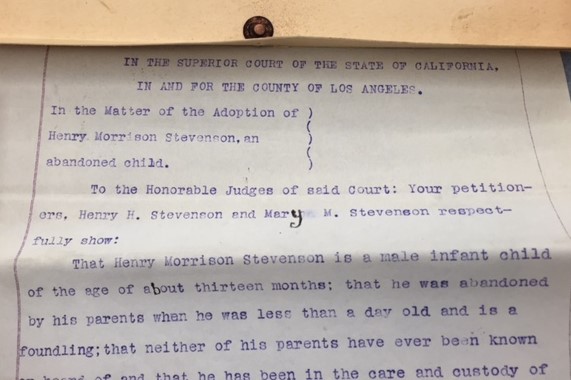
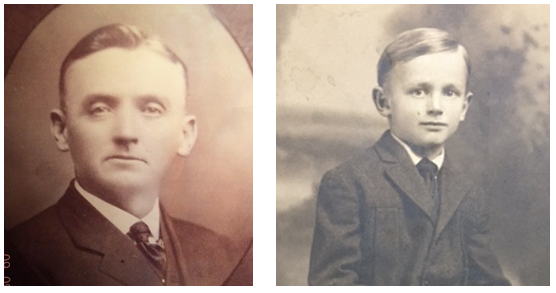
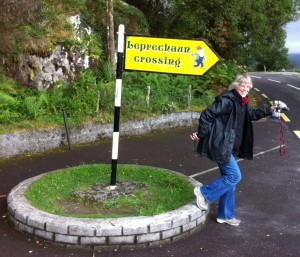
 RSS - Posts
RSS - Posts